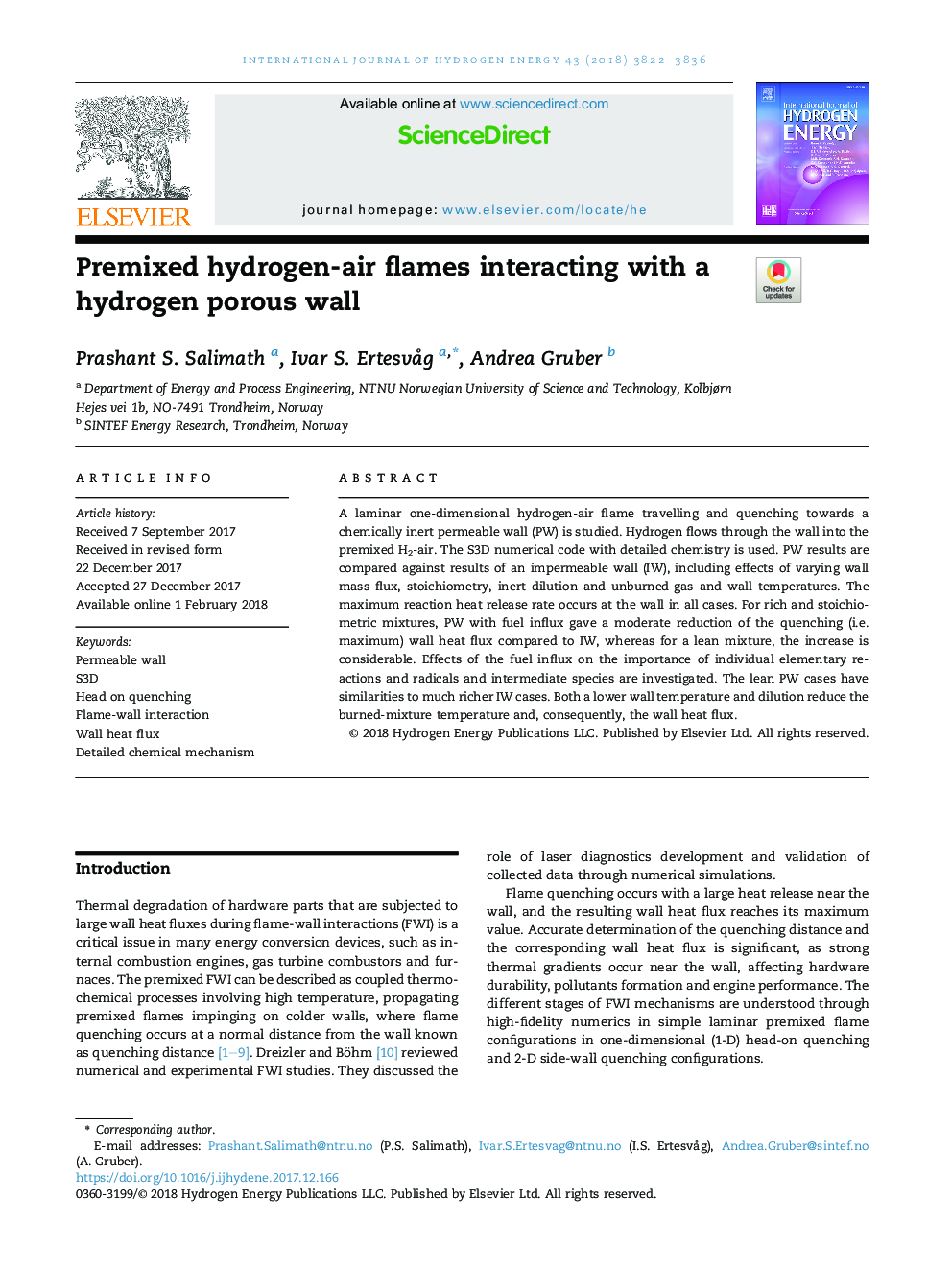| Article ID | Journal | Published Year | Pages | File Type |
|---|---|---|---|---|
| 7707669 | International Journal of Hydrogen Energy | 2018 | 15 Pages |
Abstract
A laminar one-dimensional hydrogen-air flame travelling and quenching towards a chemically inert permeable wall (PW) is studied. Hydrogen flows through the wall into the premixed H2-air. The S3D numerical code with detailed chemistry is used. PW results are compared against results of an impermeable wall (IW), including effects of varying wall mass flux, stoichiometry, inert dilution and unburned-gas and wall temperatures. The maximum reaction heat release rate occurs at the wall in all cases. For rich and stoichiometric mixtures, PW with fuel influx gave a moderate reduction of the quenching (i.e. maximum) wall heat flux compared to IW, whereas for a lean mixture, the increase is considerable. Effects of the fuel influx on the importance of individual elementary reactions and radicals and intermediate species are investigated. The lean PW cases have similarities to much richer IW cases. Both a lower wall temperature and dilution reduce the burned-mixture temperature and, consequently, the wall heat flux.
Related Topics
Physical Sciences and Engineering
Chemistry
Electrochemistry
Authors
Prashant S. Salimath, Ivar S. Ertesvåg, Andrea Gruber,
